Message Thread:
Lacquer Won't Dry
3/1/16

The original finish on this cypress table was just some Johnson's paste wax hand-rubbed to help repel spills, stains, etc. Disappointed in the look and effectiveness of this finish, I brought it back to the shop several months later, sanded it (although the paper kept clogging with wax, so I know there was some wax left on the surfaces), sprayed a couple of coats of SW vinyl sealer which took a couple of days to dry (that's when I knew I had trouble on my hands), and then I sprayed two coats of SW Cab Acrylic Lacquer. It's been sitting in my spray room for about two days and still is tacky in some spots. Is there any fix for this, short of stripping it back down to bare wood and refinishing it? I've got some time on this, so if I just need to wait it out a few more days, that's ok, too.
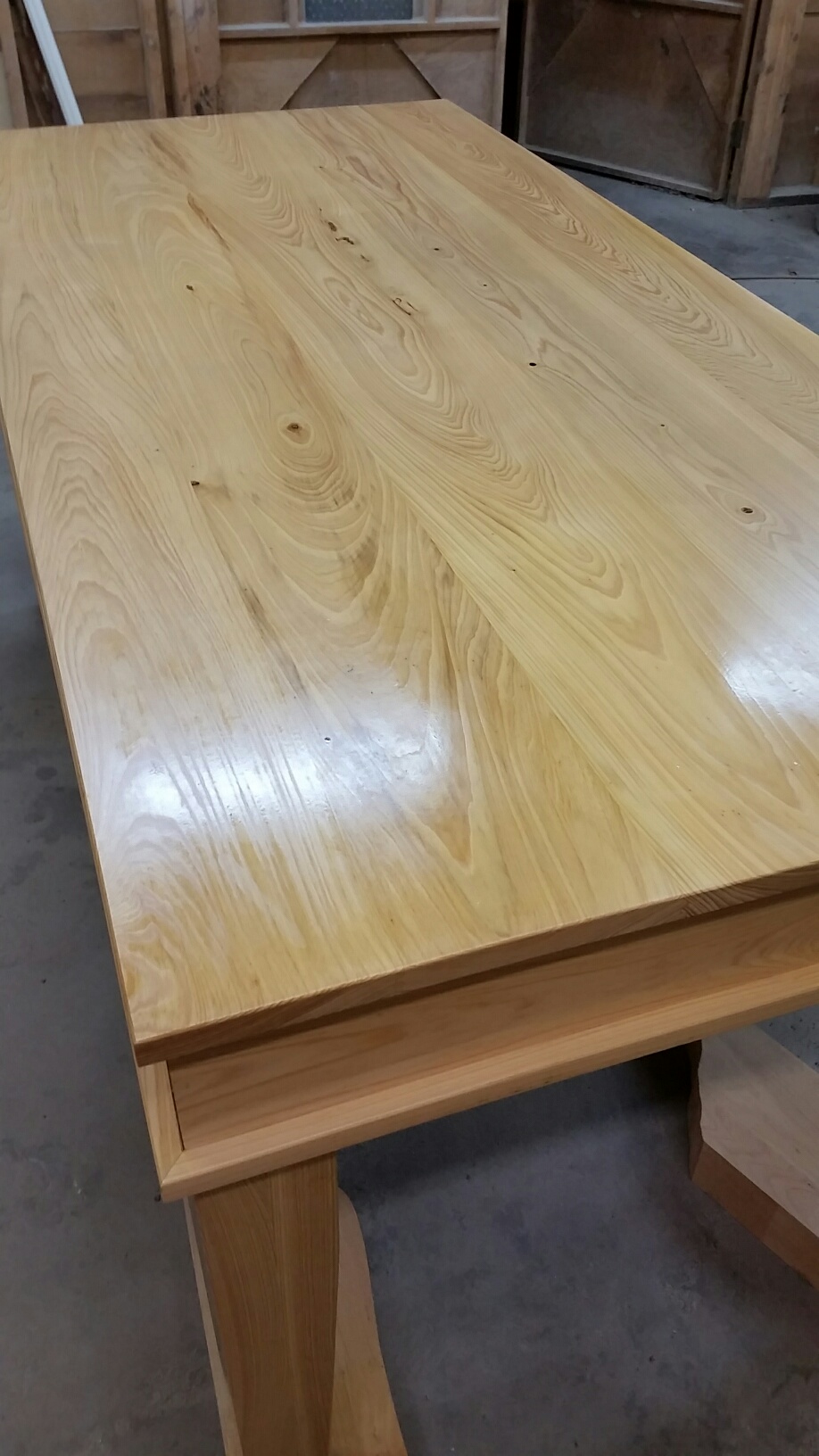
View higher quality, full size image (918 X 1632)
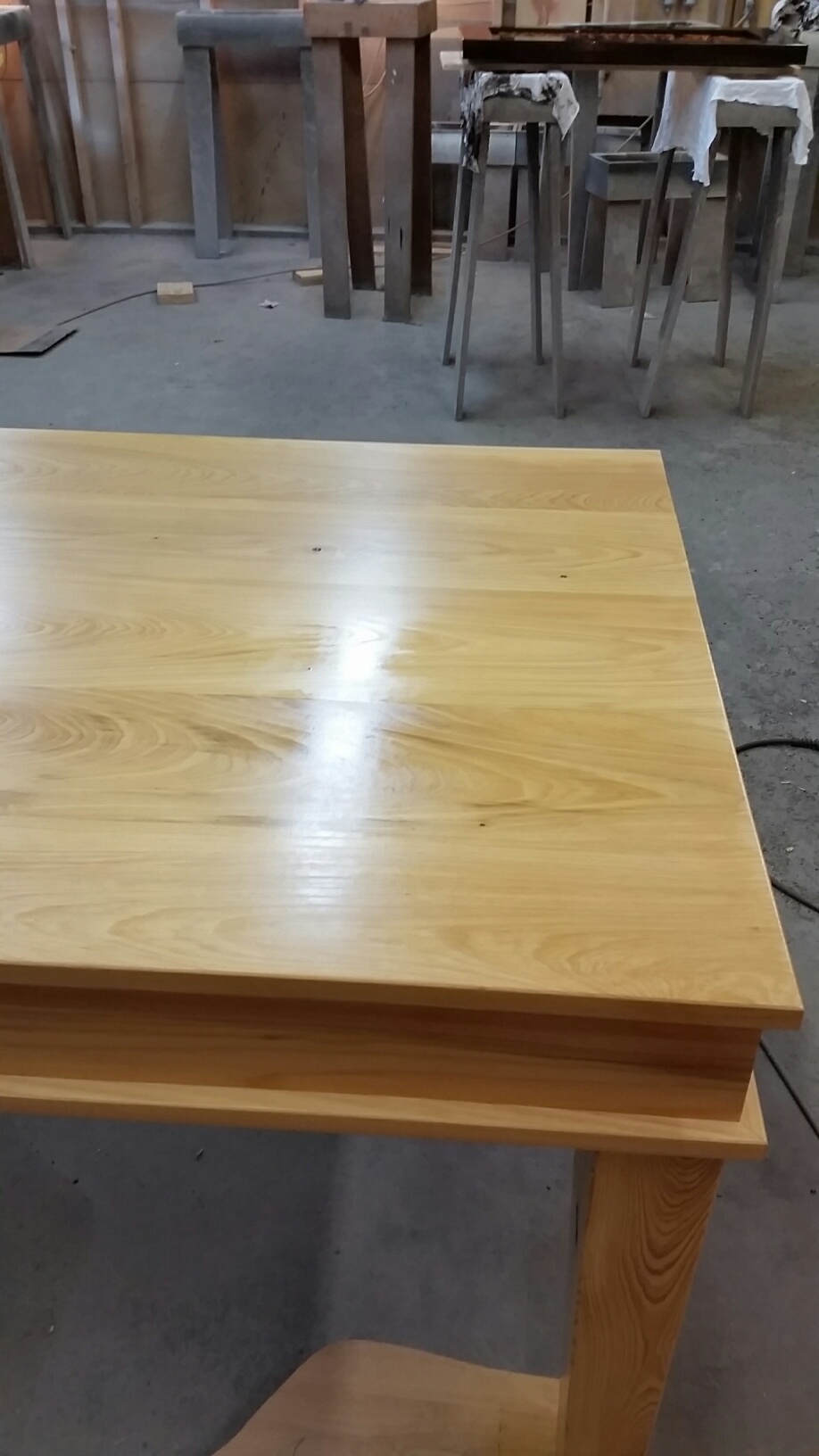
View higher quality, full size image (918 X 1632)
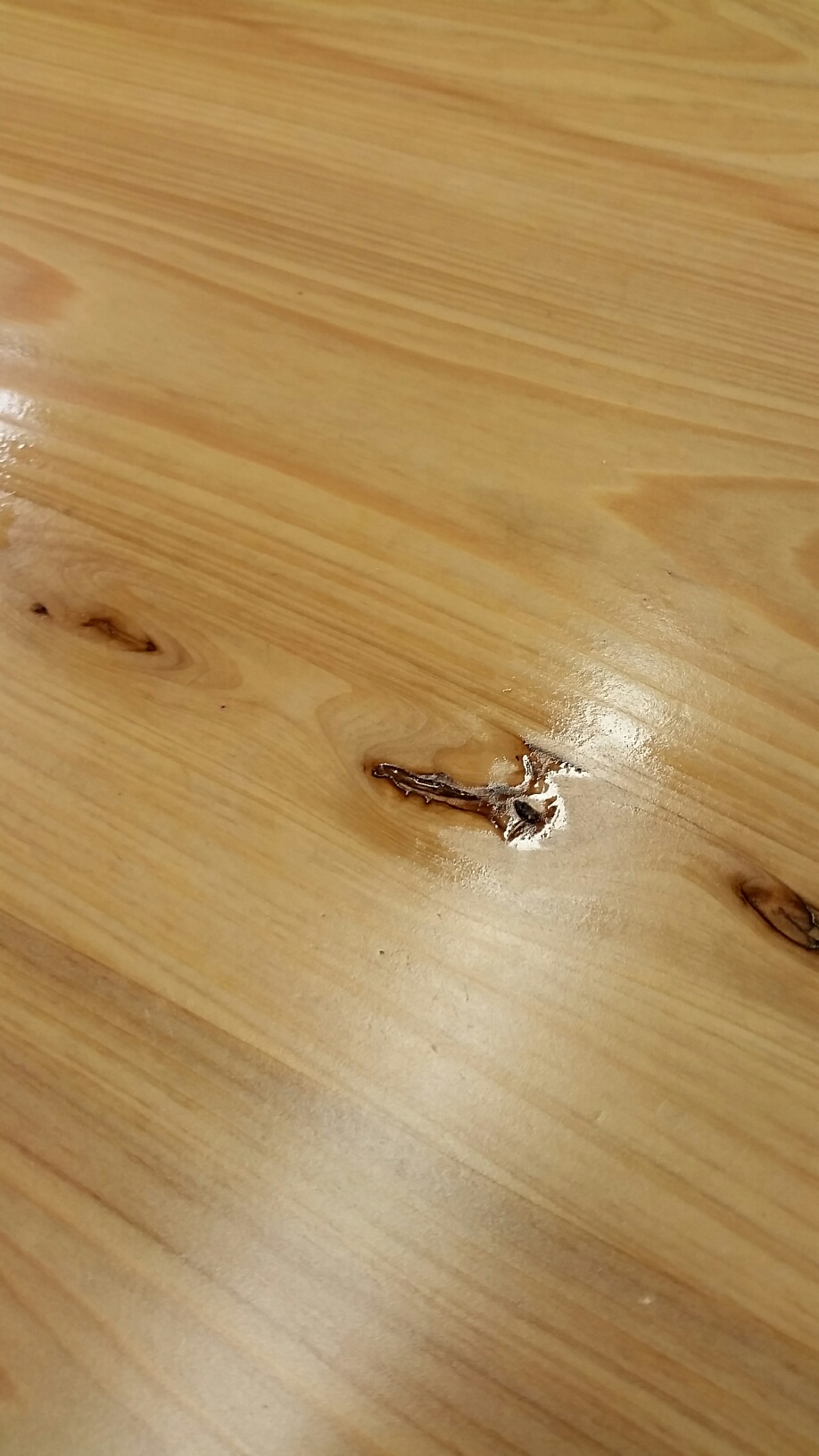
View higher quality, full size image (918 X 1632)
3/2/16 #3: Lacquer Won't Dry ...

dont be lazy. If its worth doing, do it right. If you choose to continue with this incorrectly attempted refinish, you will no doubt have failures. You should have stopped at the first sign of issues. However, being that its just a clear finish and sprayed with lacquer, the stripping should be simple (but necessary).
Strip it!
wash it thoroughly with wax and grease remover. Then wash it again.
Then you may sleep well knowing that your not passing your bad work onto unsuspecting customers.
3/2/16 #4: Lacquer Won't Dry ...
 Website: finishing.tips
Website: finishing.tips
Here's an alternative that works well....
Gently wipe the surface with a cotton cloth folded flat and wetted (not dripping) with zylene (or wax and grease remover). Rotate the face of the cloth as needed to keep it clean. This will remove the wax that migrated to the surface of the finish. Be careful where the finish is sticky - it's soft and easily damaged.
Let it dry for a day, scuff sand and apply the final coat.
3/2/16 #5: Lacquer Won't Dry ...

Probably best to strip it down to raw wood and start over with a clean wax free canvas.
Sanding off a finish is not always the best approach to stripping.
Chances are that the wax just got moved around with the back and forth movement of the sander.
The heat generated from the sand paper being agitated against the wood, forced the wax into the wood.
Don't waste your time kicking a dead horse.
Chemically strip the finish off. Once its stripped, wash/rinse it off real real good with Lacquer Thinner. A Maroon colored Scotch-Brite pad along with the L/T will give you a nice clean surface to apply your finish to.
3/2/16 #6: Lacquer Won't Dry ...
 Website: finishing.tips
Website: finishing.tips
When I was refinishing furniture I ran into this problem a once in a while and fixed it by carefully using zylene to remove the wax (a trick I learned on this forum years ago). It's a LOT less work than stripping the finish and starting over. It only takes a couple minutes...
If it doesn't work in this case, starting over is always an option.
It also looks like you may have some resin bleed at the knots. If so, shellac works well to seal them.
3/2/16 #7: Lacquer Won't Dry ...

Thanks for the advice. I will definitely try applying the xylene with a cloth.
Kevin, I failed to mention that this table is for my wife's office. She doesn't care that the finish is applied incorrectly, she just wants a clear finish that is more durable and stain resistant than the wax. There is no unsuspecting customer involved. If the finish fails now or later on, I will fix it. I suppose I took the lazy route by not researching how the wax would affect the finish and now I have to deal with the consequences, but there was no attempt to deceive a customer.
3/2/16 #8: Lacquer Won't Dry ...

Gotcha! =)
In my experience, the wife is always the hardest customer to please!! You might want to consider iron cladding that table!
3/2/16 #9: Lacquer Won't Dry ...

If the finish fails? You have lacquer sitting on top of wax, it's going to fail. If it would dry, you'll be able to get a finger nail under the finish and peel it off. Strip it off.
3/2/16 #10: Lacquer Won't Dry ...
 Website: finishing.tips
Website: finishing.tips
rich - the wax rises to the surface when you spray the finish. The solvents in the finish dissolve it and it floats to the top. The wax sitting on the surface is why the finish is sticky in patches - the wax prevents air from drying the finish. The finish is not sitting on top of the wax.
Most people don't realize, but waxes are used as an additive in finishes to improve scratch, abrasion and mar resistance, lower sheen, act as a defoaming agent, modify the flow of the finish, and improve it's chemical resistance. Of course that doesn't mean anyone should add wax to their finish - it's an exacting science.
Using a solvent like zylene (or naptha or toulene) that dissolves the wax without damaging the finish is a simple solution. You just have to be careful to go very lightly over the tacky areas.
3/3/16 #11: Lacquer Won't Dry ...

Gosh, so a guy can really save some time by waxing and spraying at the same time. Learn something new every day. Thanks Paul.
3/3/16 #12: Lacquer Won't Dry ...
 Website: finishing.tips
Website: finishing.tips
I wouldn't recommend it...
3/4/16 #13: Lacquer Won't Dry ...

I'll give it a shot with the xylene this evening. I'll post the results soon.
3/5/16 #14: Lacquer Won't Dry ...

Paul Snyders tip is 100% right. It work's I have used the same technique when I have had issues.
3/8/16 #15: Lacquer Won't Dry ...

Rubbing with the xylene worked, but it is a delicate process. In a couple of spots, I rubbed a little too hard and displaced some of the lacquer with the rag, creating some small ridges in the surface. After the xylene evaporated and the lacquer dried off, I sanded the entire top surface with 220 and then 320 sandpaper to smooth the ridges and scratch the surface, then applied another coat of lacquer. A couple of small tacky spots reappeared, so I tried rubbing this time with mineral spirits, hoping to clean off the wax that had re-risen to the surface without breaking into the lacquer. It took a couple of applications, but it did the trick. Those spots where I rubbed the mineral spirits did stay a little shinier than the rest of the surface, although I suspect it was caused by the rubbing and not the mineral spirits itself. The final product is very acceptable for its application, a work table at a marketing and design agency. Had it been a brand new dining table, coffee table, etc., I would have needed to continue with the rubbing and recoating process to achieve a more perfect finish, but such was not the case.
Thanks, Paul, for the tip. You saved me a lot of time and trouble.
Could there possibly be a more appropriate solvent than xylene or mineral spirits for this process? A solvent that could break down the wax better than mineral spirits without breaking down the lacquer like the xylene does?
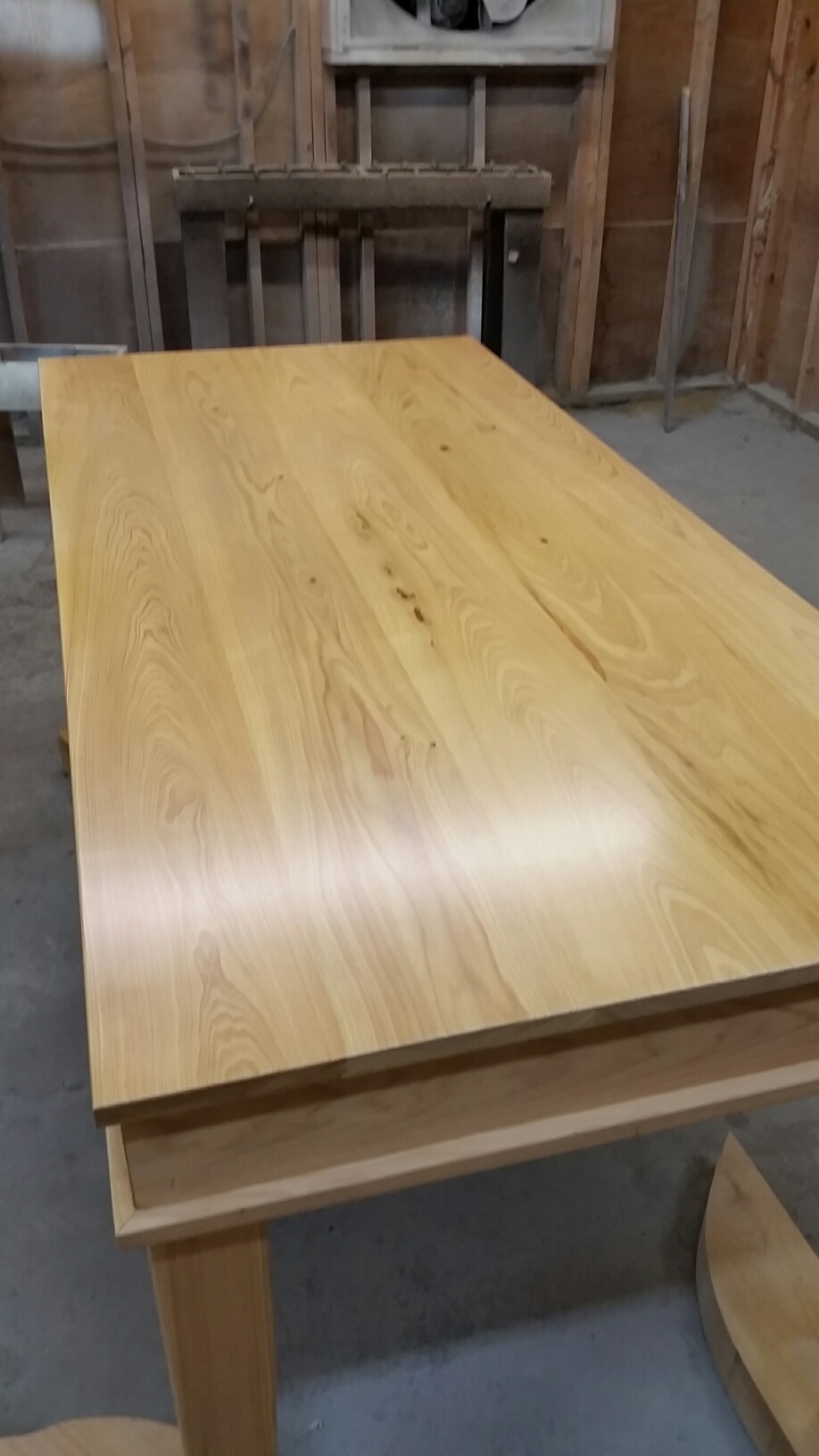
View higher quality, full size image (918 X 1632)
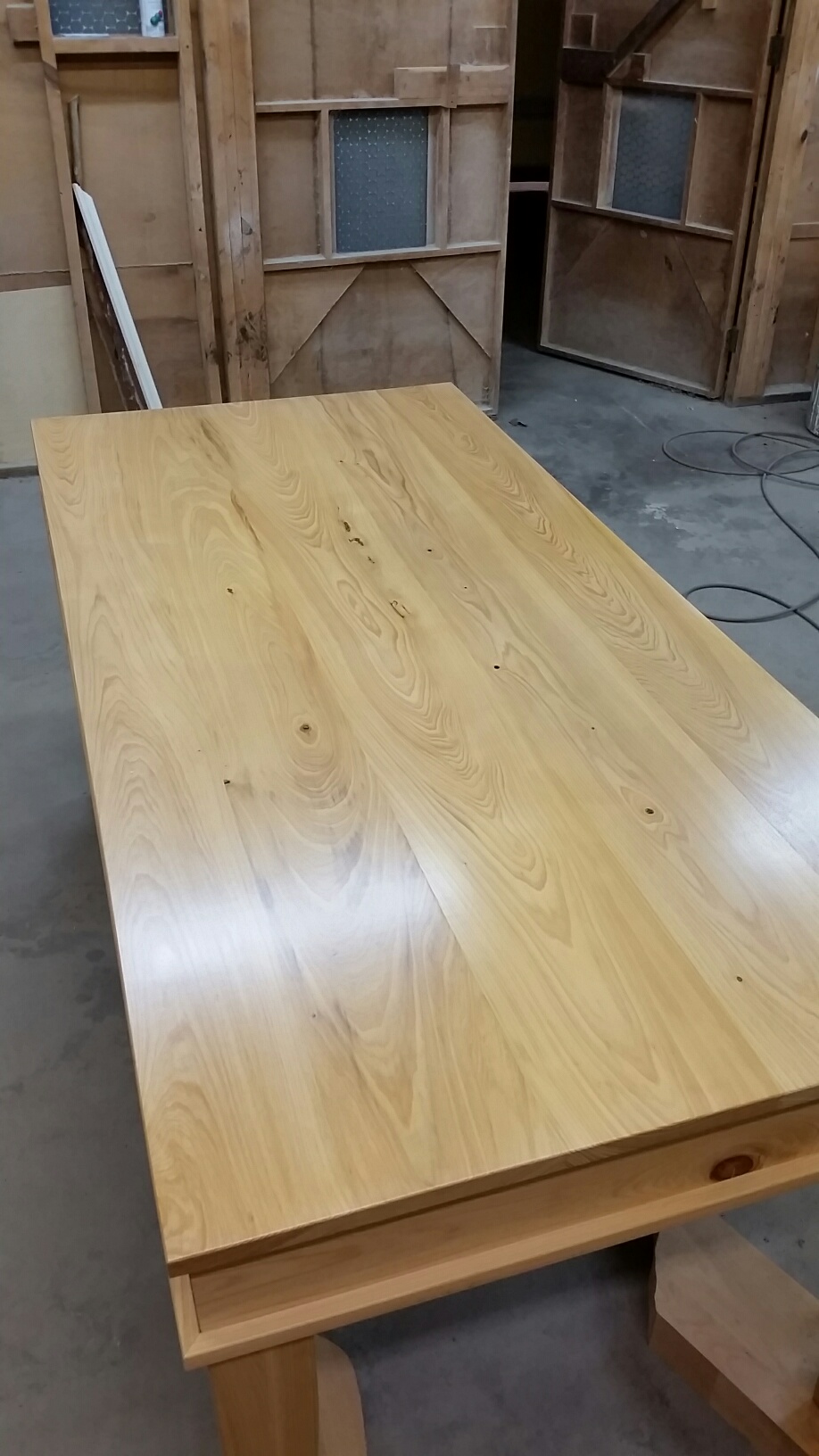
View higher quality, full size image (918 X 1632)
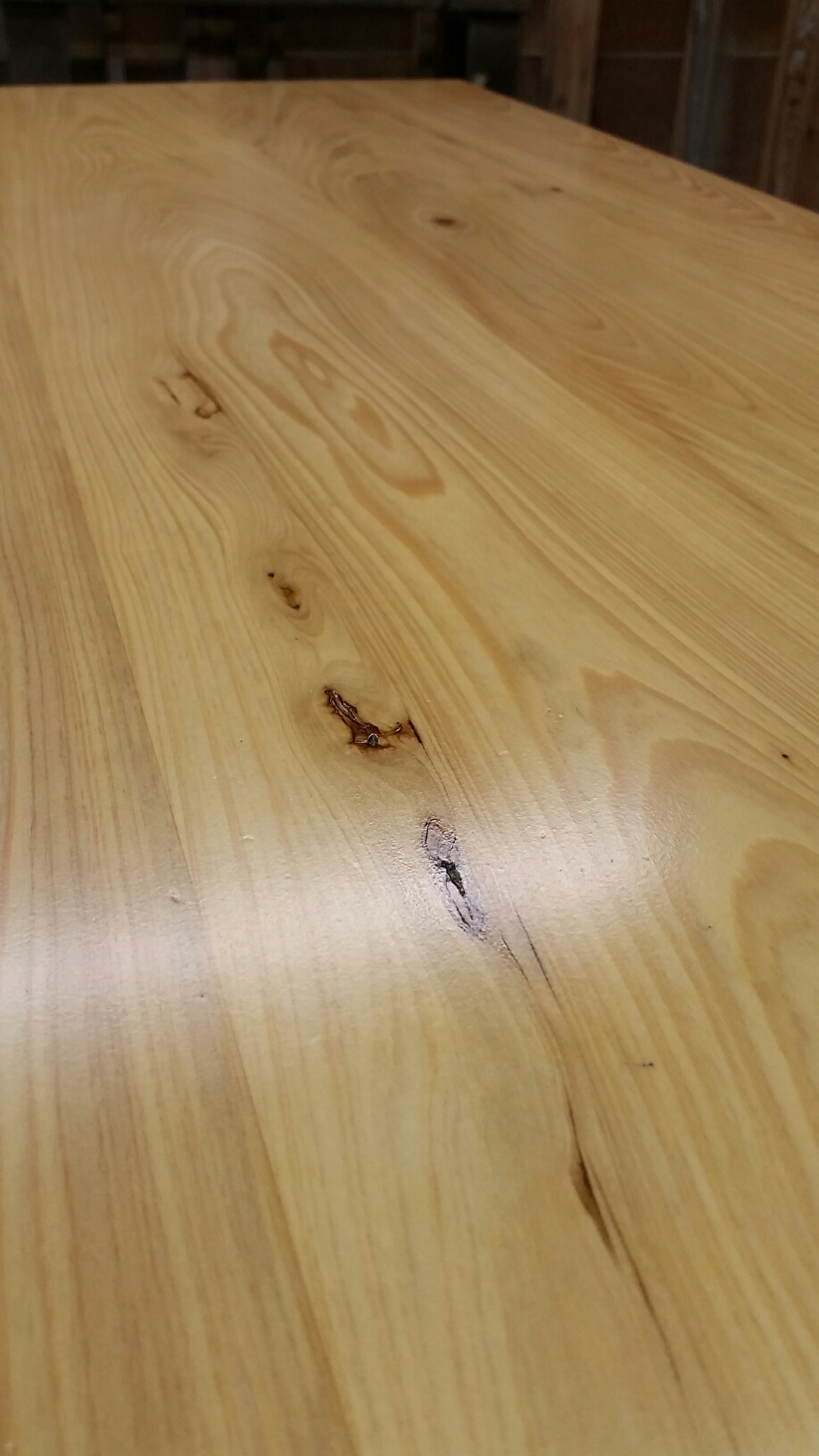
View higher quality, full size image (918 X 1632)
3/8/16 #16: Lacquer Won't Dry ...
 Website: finishing.tips
Website: finishing.tips
Nicely done Willie - looks much better.
The family of solvents that come from distilling crude oil are a good choice for dissolving wax without damaging dried lacquer and other finishes, but you should do your best to avoid "rubbing." A light wipe/swipe with a cotton cloth folded to keep the contact face flat and smooth is the best approach. I like to use the heavy duty paper towels sold as “Box of Rags” in the paint aisle for this purpose (2-3 folded into quarters - rotate face frequently). For those that do refinishing work, this problem is not unusual and you get pretty good at removing the wax without damaging the finish - it takes some practice. Note that there is usually a LOT less wax after the refinisher cleans the stripping residue before applying a new finish. Your case was unusual in that regard.
Common petroleum distillate solvents include toluene, xylene, naphtha, and mineral spirits – listed in order of speed of evaporation. The first two, toluene and xylene, are strong enough to soften many cured polymers (e.g., dried oil-base paint or varnish), but not strong enough to dissolve them (solvent strength of 105 and 98). They are a good choice to use as a co-solvent to promote adhesion without wrinkling the previous coat(s) of paint/finish. Toluene evaporates fast and xylene evaporates medium-fast.
Naphtha and mineral spirits have lower solvent strength (34 and 37 respectively) and are used as thinners for oil-base paints/finishes. They don’t soften or dissolve cured oil-base polymers. Naphtha evaporate faster than mineral spirits and is less oily.
I like xylene because it has other uses – it can remove dried latex paint; white or yellow glue; and some tape residues without damaging an existing lacquer finish (again, avoid rubbing – use as a wet compress and gently wipe once softened). It’s also good for cleaning a silk-screen or printing rollers between colors.
To remove wax and reduce the possibility of damaging the existing finish, naphtha would be the all-around best choice. It has low solvent strength, is less oily than mineral spirits, and evaporates fast.
|
